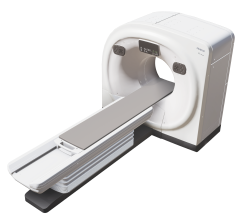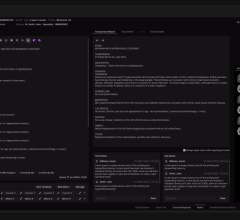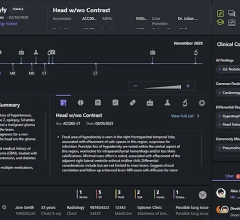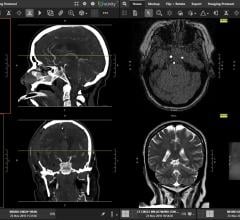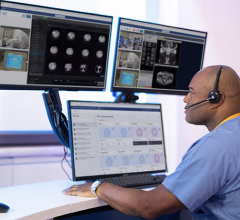Philips' IT: Breaking Down Silos, Not Extending Them

IntelliSpace Universal Data Manager supports healthcare enterprises by organizing millions of images and quickly delivering them to clinicians. Image courtesy of Philips Healthcare.
Enterprise imaging is supposed to break down silos so medical images and other patient data can flow freely across campuses, departments, outpatient clinics, and physician offices. Some critics say, however, that in some cases enterprise imaging simply expands radiology's own silo to surround those of other medical specialties. Two new products from Philips — IntelliSpace Universal Data Manager and Illumeo with adaptive intelligence — aim to blunt that criticism.
Philips' Universal Data Manager supports the integration of traditional medical images coming from such ordered exams as CT, MR and ultrasound. It also supports the handling of non-ordered imaging, for example, pictures of the eye taken by an ophthalmologist or of an external injury such as a burn or cut taken by a wound care specialist.
Illumeo — Phillips' complement to the Universal Data Manager, both of which were unveiled at RSNA 2016 — uses adaptive intelligence to find, compile, and present to the radiologist images and other clinical data drawn from PACS and electronic medical record systems. The only consideration of the intelligent algorithms that orchestrate this assemblage is whether the data are relevant to the interpretation of images for the specific patient study, said Calum Cunningham, general manager of Philips enterprise imaging.
"The job that we have set for ourselves is coming up with something entirely new that would address the whole problem and not just parts of it," Cunningham said.
Managing All Images
Traditional PACS deliver images "pretty much instantly," he said. But they cannot handle both the ordered and non-ordered imaging with the same elegance. Nor are they very good at bringing non-ordered images into the patient's timeline. VNA-based solutions do the opposite. They are highly interoperable and scalable, Cunningham notes, but lack the requisite speed and performance.
Whether the study is comprised of ordered or non-ordered images doesn't matter to Philips' Universal Data Manager. The standards on which the manager is built allow it to handle images effectively and quickly regardless of their type and study size. The first image is available in three seconds, Cunningham said, "as long as the broader network supports that speed."
The challenge of handling non-ordered images is growing, he said. "There are indications that the number of those will far outstretch those of traditionally ordered imaging studies, such as CT scans," Cunningham said.
And the challenge met by the Universal Data Manager goes beyond just handling more and different kinds of medical images. It can be programmed to archive images for varying lengths of time to reflect customizable priorities set by the medical provider.
For example, radiographs of a routine adult wrist fracture might be purged after 12 months, whereas a pediatric CT study might be kept for much longer, up to 20 years. "Requirements can vary state by state and institution by institution," he said.
Illumeo with Adaptive Intelligence
Eran Rubens, Philips' chief technology officer for enterprise imaging, compares Illumeo to an intelligent smartphone map application. A consumer trying to find a restaurant, for example, might use a smartphone app to find a restaurant. The app might then automatically state the hours of operation and even present a menu from the restaurant along with its phone number.
In much a similar but much more sophisticated way, Illumeo with adaptive intelligence isolates the clinical focus of the radiology study and automatically provides additional patient data that may be helpful when interpreting the images. It also retrieves images from prior exams. These priors are called up, registered with the current images, and displayed in a way that allows easy comparison, Rubens noted.
"The most appropriate images from prior exams pop up," he said. "They are aligned anatomically so the radiologist is looking at the region of interest (in the patient) so they get an apples-to-apples comparison."
This confluence of medical data takes shape seconds after the radiologist clicks the worklist. Illumeo draws the relevant information together using its adaptive intelligence techniques.
"Built-in intelligence understands the anatomical context and thus what the radiologist is looking at on the screen and is able to scan for relevant priors and data from the EMR," Cunningham said. "Radiologists just click on the work list and all this context — this highly relevant information — just appears.”
Illumeo not only changes the way radiologists interpret images but how they share their findings. Rubens explained that images are shared, in context, to illustrate important points and findings.
"The referring physician can navigate through the exam," he said. "So instead of being forced to use whatever view the radiologist happened to be using — whatever frozen image — the referring physician can interrogate (the radiologist's) findings interactively."
Works with Philips IntelliSpace PACS
Universal Data Manager and Illumeo work with the company's IntelliSpace PACS. Built into the archive, the Universal Data Manager manages the variety of images that are stored by different specialties. Illumeo provides intelligent, contextually driven workflow, Rubens said, navigating not only the PACS but other data repositories.
Although each depends on pattern recognition, the algorithms are not being groomed to replace the radiologist. "We are very clear about that," Cunningham said. "We have developed (these algorithms) as part of a human-computer interface to augment the radiologist’s experience."
The Universal Data Manager and Illumeo, he said, are essentially intelligent machine assistants. Their use may change the way radiologists form diagnoses. So might they change the interaction among radiologists and other specialists.
In doing all this, they may help radiologists expand their role as members of the patient management team, thereby meeting the challenges of today as well as those of tomorrow.



 August 06, 2024
August 06, 2024 

